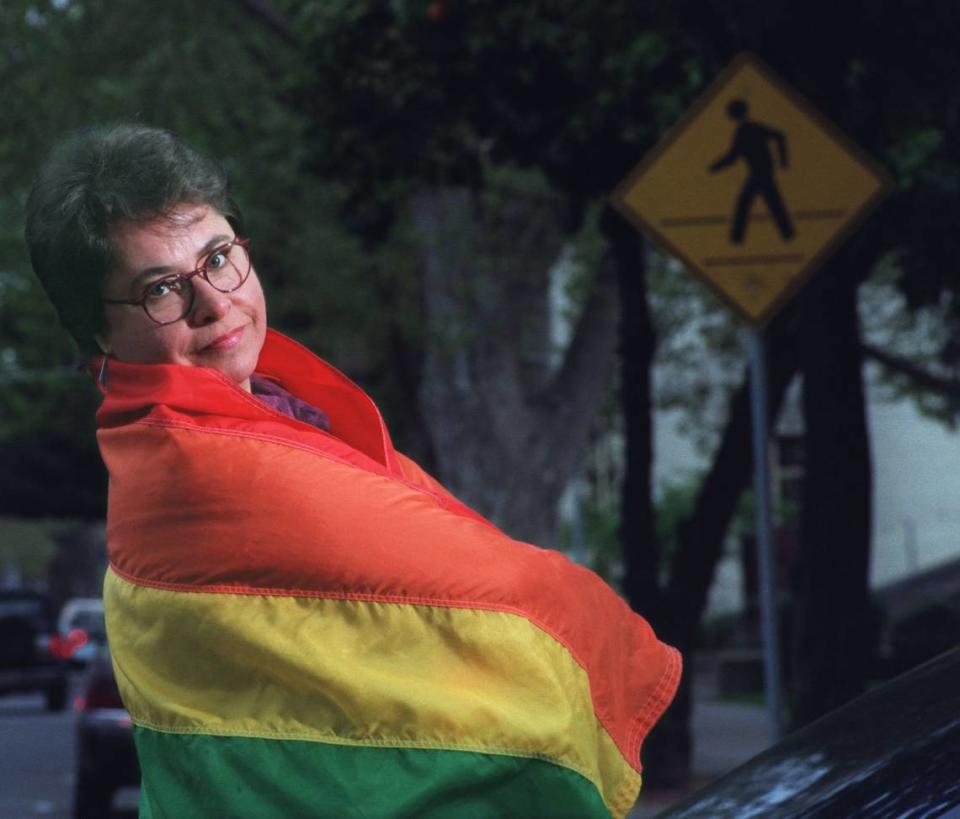Sacramento project embarks on journey to share city’s rich LGBTQ history. And you can help
The city of Sacramento will spend the next year researching the stories, lives and experiences of the city’s LGBTQ community, culminating with the LGBTQ+ Historic Experience Project.
For the next year, city historians will host public meetings and conducting interviews, and begin collecting photographs and documents to archive the people, places and events that have shaped Sacramento’s LGBTQ community. The work will continue through 2024.
A team of city historic preservationists will look to the Lavender Heights neighborhood in Sacramento’s midtown — long the center of the city’s LGBTQ community — surveying its buildings, structures and other locations for its potential as a historic district.
And the community’s being asked to help. The project team put out a call earlier this month for photos, documents and personal accounts, and will open an online portal to submit materials to the city’s archive. People can sign onto an email list to be notified when the portal opens and to receive project updates.
The project follows in the footsteps of the city’s African American Experience project, which wrapped up in June. The project’s archival research and oral history, interviews and scholarship produced a history of Sacramento’s Black community that dates back to the city’s earliest days.
Organizers of the LGBTQ project say this endeavor will build an archive that “encapsulates the LGBTQ+ experience and journey in Sacramento.”
The city Historic Preservation team’s project recently received $40,000 from the California Office of Historic Preservation to begin its work. Sacramento provided nearly $27,000 in additional funds, city officials said.
“This is an exciting opportunity to identify the historic sites important to the LGBTQ community so they can be recognized and preserved for generations,” said Sean de Courcy, the city’s preservation director, in a statement. “We are looking forward to working with the community on this important project.”
Ongoing efforts to chronicle the city’s LGBTQ history
Linda Birner started the the pioneering Sacramento LGBTQ newspaper Mom Guess What in 1977 to warn against Proposition 6, the 1978 state ballot measure that sought to bar gay and lesbian people from working in California public schools.
The measure was defeated, and Mom Guess What would continue for more than 30 years. Nearly the paper’s entire output is now archived at the Center for Sacramento History and the Lavender Library.
Birner’s paper modeled her paper after The Sacramento Bee — Bee publisher C.K. McClatchy was a valuable ally and mentor — and it quickly became a voice for an increasingly visible gay and lesbian community in the Capital city and beyond.
“I started it not as as a career, but to get the word out,” Birner said this week. “The biggest reason was that there was no voice for us at all. Our voice extended across Northern California. They learned more about the community they lived in, because we were forced into a closet before 1977.”

Now, years after her last edition went to press, Birner is eager for a new telling of her community’s — and her city’s — history, one that includes the voices she dedicated a lifetime to sharing.
“We’re everywhere. We’re not just Lavender Heights. We’re all over the county and the connecting communities,” Birner said. “We want Sacramento to know LGBTQ history and know that the LGBTQ community is a big part of the city’s history.”
Some of that history lives with the work of George Raya, who cheered the city’s efforts this week.
“I love it. We’re part of the city’s history,” Raya said. “There’s the old stories about the Old West. We were there then, too. We just didn’t know the word, ‘partner,’ then.”
The pioneering activist and advocate has been a leading Sacramento voice for LGBTQ rights for more than a half-century, from winning a key court battle to establish a club for gay and lesbian students at then- Sacramento State College, to lobbying state and federal lawmakers in the 1970s as a member of the National Gay (now LGBTQ) Task Force to advance gay rights and decriminalize same-sex relationships.
The year was 1970. The organization was the Society for Homosexual Freedom. Raya, a student senator, and friends envisioned the growing, but still unofficial, club as a refuge for the campus’ gay and lesbian students at a time when open homosexuality was a crime in California.
But the university’s acting president, Otto Butz, stood in the way, rejecting the fledgling club’s petition. Butz’s 1970 letter to the campus’ student body president reflected the intolerant tenor of the times.
Homosexuality was considered “an offense of serious dimensions,” Butz wrote. The college could “seem to...attract homosexuals to the campus.” A club on campus for gays and lesbians, he continued, could “expose minors to homosexual advocacy and practices.”
“They wouldn’t allow us to have an LGBTQ club on campus. (Butz) said ‘no,’ so we took him to court,” Raya said. “We won.”

